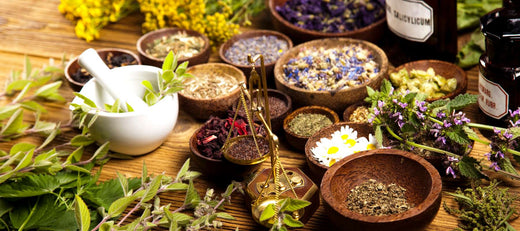Marigolds, also known as Tagetes, are cheerful flowers that belong to the same family as sunflowers and asters. Native to Mexico and Guatemala, they are now cultivated globally. These beautiful and resilient plants are well known for their showy blooms, and they are also renowned for being exceptionally easy to grow, making them ideal for novice gardeners. As ideal companion plants for a wide range of vegetable crops, marigolds can add a vibrant splash of color to any sunny spot. They are a valuable addition to any garden, even a container garden. Let’s take a closer look at this fascinating plant and its history.
The History of Marigolds
Marigolds have been cultivated for centuries in their native Mesoamerican range. Upon entering Mexico, the Spanish, led by Cortes, were particularly struck by the lush marigolds among the land's flowers. Researchers have found that the Aztec, Maya, and other Mesoamerican civilizations cultivated various species of marigold. The lovely flowers had an important role in their sacred ceremonies and for use as a healing plant.
The Meaning of Marigolds
Marigolds quickly found their way across the world by way of the European colonists. Today, this lovely flower holds deep symbolism for many cultures. In Mexico, where Aztec and Spanish cultures have intermingled, marigolds have become central to the Day of the Dead celebrations, believed to guide spirits back to the living world with their bright colors and pungent scent. The Spanish and other Europeans associate the flower with the Virgin Mary, embodying themes of pain, suffering, as well as life and resurrection. In the Victorian flower language, marigolds represent grief and sadness and are used to symbolize sympathy. In India, this “friendship flower” takes on a brighter outlook. It is used in religious ceremonies and weddings to symbolize a divine blessing for new beginnings.
African Vs. French Marigolds

The Aztecs referred to many species of marigold by the name cempoalxóchitl, meaning “flower of twenty petals”, but they especially sought out and cultivated Tagetes erecta. This is the marigold variety that is often referred to by the confusing name “African marigold” because they had been introduced to Africa by the early 1600s. The tallest of the garden marigolds, this marigold reaches around 3 feet tall and has large blossoms. This is the marigold often seen in Day of the Dead celebrations. Crackerjack Marigold is an excellent example of African marigold, with a good mix of 3-5 inch yellow and orange fully double blooms that will brighten up any sunny spot in the yard.
The other popular marigold is Tagetes patula, also referred to as French marigold. French marigolds typically have a more compact, bushy habit, reaching only about a foot tall. They also have smaller flowers, often in mixed shades of orange, yellow, brown, and red. French Sparky marigold is our favorite, with its brightly colored fragrant double blooms reaching 2-3 inches across. These beauties are small enough for almost any garden and will bloom from spring to fall, dying back once bitten by frost.
Marigolds As Companion Plants

These colorful flowers are much more than just pretty ornaments for the garden. Marigolds are widely regarded as one of the most beneficial companion plants to grow, especially for growing with cabbages and tomatoes. Since they are generally deer and rabbit-resistant, they can be used to create a border around the garden to deter these animals. Their roots release a toxic chemical that repels root-knot nematodes, and they generally have a positive impact on soil yield. They also help reduce the population of many harmful insect pests like whiteflies on tomatoes and cabbage worms on brassicas (members of the cabbage family). Marigolds can also attract bees and other pollinators, as well as ladybugs, parasitic wasps, lacewings, and hoverflies that help to control aphid and mite populations.
Are Marigolds Edible?
Although not inherently toxic, African or French marigolds are not typically used for culinary purposes due to their strong, unpleasant flavor. Most species of marigolds are not generally considered edible, with the notable exception of signet marigolds, or Tagetes tenuifolia. Signet marigolds have small delicate flowers and leaves with a lemony scent. Another source of confusion is that Calendula is often referred to as “English marigold” or “pot marigold.”
Medicinal Uses of Marigolds

While African and French marigolds are not commonly used for ingestion, most of their medicinal applications are topical. When using marigolds medicinally, it's important to ensure that any references are to Tagetes and not Calendula, which has different properties. Traditionally, extracts from Tagetes marigolds have been used for skin irritations, wound care, and as an insect repellent. As always, use caution when using any medicinal plant. Although scientific research on marigold use does show promise as an antimicrobial or anti-inflammatory, that research is still quite limited.
Growing Marigolds from Seed
Marigold seeds are easy to get started, both indoors and outdoors. For an early start, sow indoors between 4 to 8 weeks before the last frost date. Barely cover the seeds with about ¼ inch of soil or potting mix. Marigold seeds need plenty of light and a warm soil temperature of 70-75°F for successful germination. Once your seedlings are established, harden them off and move outside. They will thrive in a spot with full sun with well-drained soil. Space French marigolds like French Sparky about 8-12 inches apart, and the larger African marigolds like Crackerjack about 10-18 inches apart. You can also start the plants directly outside in their chosen spot after the last frost.
Once your marigolds begin to bloom, you’ll be rewarded with a transformation in your garden, including vibrant blooms and an accompanying bustle of activity as helpful pollinators visit. Regular deadheading of old blooms will encourage more flowering and keep your marigold plants looking sharp and beautiful for the whole season.
Plant Marigold Seeds In Your Garden
If you want a valuable and beautiful flower for any garden, marigolds are an ideal choice. When you grow these flowers, you’re part of a rich history of gardening that stretches back for millennia. The plants are easy to grow and will make excellent companions for your vegetable garden.

























